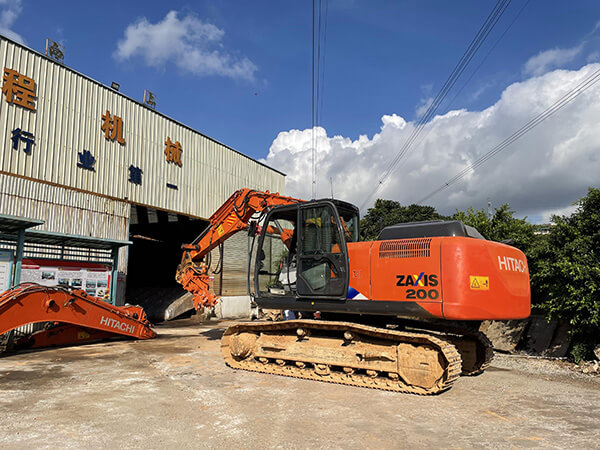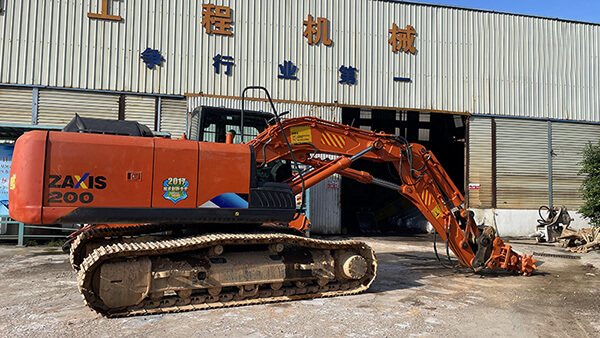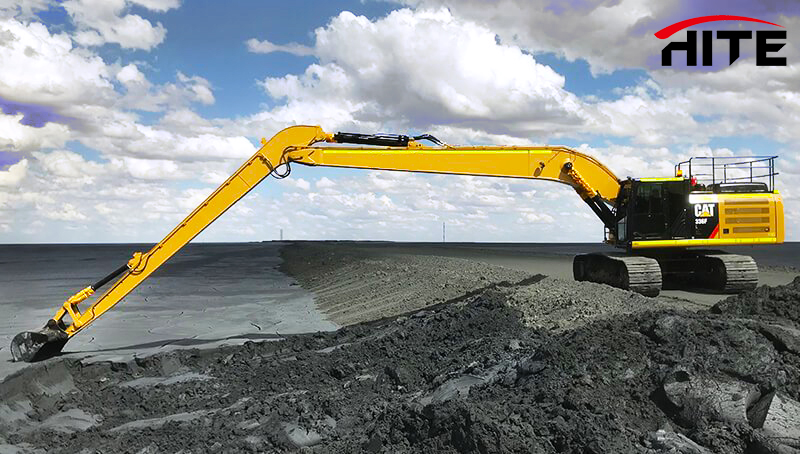Deep within the bowels of the Earth, hidden beneath layers of soil and rock, a remarkable innovation in construction has emerged—the excavator tunnel arm. This powerful appendage, equipped with state-of-the-art technology and engineering, has revolutionized the way we build tunnels and underground structures. In this popular science copy, we will delve into the fascinating world of excavator tunnel arms, exploring their features, capabilities, and the transformative impact they have had on the construction industry.
The Birth of a Game-Changer:
Excavator tunnel arms were developed in response to the growing demand for efficient and cost-effective tunneling techniques. Traditionally, constructing tunnels required large teams of workers armed with manual tools, which was a time-consuming and labor-intensive process. However, with the advent of the excavator tunnel arm, this cumbersome approach has been replaced by a mechanized marvel.
Features and Capabilities:
Excavator tunnel arms are colossal machines, combining brute power and precision control. These hydraulic arms are mounted on specialized tunneling machines, enabling them to excavate tunnels of varying sizes and shapes. Equipped with an array of cutting-edge attachments, including high-powered drills, buckets, and breakers, the tunnel arm can adapt to different soil and rock types, effortlessly breaking and removing debris.
One of the defining features of the excavator tunnel arm is its exceptional reach and flexibility. With the ability to rotate 360 degrees and extend both vertically and horizontally, it can navigate through tight spaces and reach remote corners. This versatility allows the arm to excavate tunnels with unparalleled accuracy, ensuring smooth and precisely aligned structures.
Safety and Efficiency:
Excavator tunnel arms have not only improved efficiency in tunnel construction but have also enhanced safety for workers. By mechanizing the excavation process, these arms have minimized the need for human workers to be directly exposed to hazardous environments. This significantly reduces the risk of accidents and injuries.
Furthermore, the precise control and monitoring systems incorporated in modern tunnel arms enhance operational safety. Sensors and cameras provide real-time feedback to operators, allowing them to monitor the progress of the excavation and ensure structural integrity.
Impact on Construction Industry:
The advent of excavator tunnel arms has had a profound impact on the construction industry. Tunneling projects that previously took years to complete can now be finished in a fraction of the time. The speed and efficiency offered by tunnel arms have accelerated the pace of infrastructure development, enabling the construction of subterranean networks for transportation, utilities, and underground storage facilities.
Moreover, the precision and accuracy of excavator tunnel arms have led to the creation of more stable and secure tunnels. This has reduced the risk of structural failures and collapses, providing a safe and reliable infrastructure for various industries.
Future Possibilities:
As technology continues to advance, so too will the capabilities of excavator tunnel arms. Innovations such as autonomous operation and artificial intelligence integration hold the potential to further enhance their efficiency and safety. Additionally, the development of environmentally friendly power sources for these machines could significantly reduce their carbon footprint, making tunneling operations more sustainable.
Conclusion:
Excavator tunnel arms have revolutionized the way tunnels and underground structures are constructed. With their power, precision, and versatility, these remarkable machines have accelerated the pace of infrastructure development, improved worker safety, and paved the way for a future of efficient and sustainable subterranean construction.
Future Applications and Advancements:
The potential applications of excavator tunnel arms extend beyond traditional tunnel construction. These machines can be adapted to suit various industries and projects. For example, they can be utilized in mining operations to extract valuable resources from underground mines. The precision and power of the tunnel arm can aid in the removal of ore and other materials, making mining operations more efficient and cost-effective.
Additionally, excavator tunnel arms can play a crucial role in the development of underground storage facilities. These facilities can be used for various purposes, such as storing hazardous materials, preserving sensitive artifacts, or securing valuable assets. The precise excavation capabilities of the tunnel arm ensure the creation of stable and secure storage spaces, protecting the contents within.
To further enhance the capabilities of excavator tunnel arms, ongoing advancements in technology are being explored. Researchers and engineers are focusing on developing smarter control systems that incorporate artificial intelligence algorithms. These systems would enable the tunnel arm to autonomously analyze geological data, adjust excavation parameters in real-time, and optimize efficiency.
Furthermore, efforts are being made to integrate alternative power sources into these machines, reducing their reliance on fossil fuels. This could include the use of electric or hybrid systems, minimizing carbon emissions and making tunneling operations more environmentally friendly.
Conclusion:
Excavator tunnel arms are not only revolutionizing tunnel construction but also showcasing their potential in various industries. As technology continues to advance, these machines will become smarter, more efficient, and environmentally sustainable, opening up new frontiers in underground construction and resource extraction. The future of excavator tunnel arms is bright, promising exciting advancements and possibilities.
Unlocking the Subterranean World:
The emergence of excavator tunnel arms has unlocked the vast potential of the subterranean world. With their capabilities and versatility, these machines are enabling the development of complex underground networks, expanding our cities and infrastructure beneath the surface. Tunnels that were once considered impractical or too costly are now feasible and economically viable.
These advancements have a profound impact on urban planning and transportation. Underground tunnels can alleviate traffic congestion, provide efficient transportation routes, and connect distant regions. Additionally, they can serve as vital conduits for utilities, such as water, sewage, and telecommunications, freeing up space above ground for other purposes.
Moreover, excavator tunnel arms are opening up opportunities for underground living spaces and recreational areas. With careful design and engineering, underground complexes can offer sustainable and energy-efficient solutions, reducing the strain on surface land and mitigating the impact of urbanization.
The subterranean world is a vast frontier waiting to be explored, and excavator tunnel arms are the key to unlocking its potential, revolutionizing how we utilize the space beneath our feet.
Conclusion:
Excavator tunnel arms have not only revolutionized tunnel construction but have also paved the way for the exploration and development of the subterranean world. From transportation networks to storage facilities, their power, precision, and versatility are transforming the way we build, connect, and utilize space beneath the surface. The future holds endless possibilities for excavator tunnel arms, shaping the way we interact with and utilize the subterranean realm.








Leave A Comment